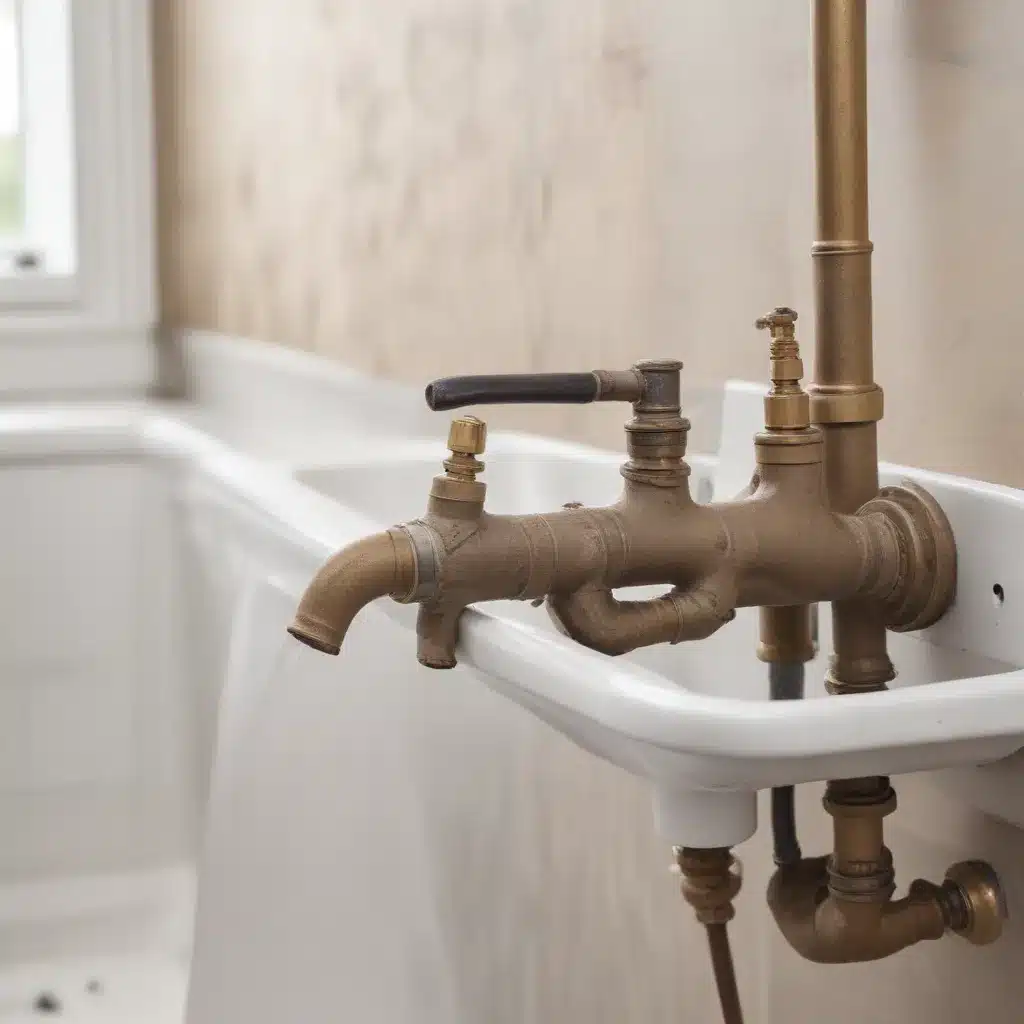
Preserving Architectural Charm While Modernizing Functionality
Historic homes are architectural masterpieces that captivate homeowners with their timeless charm, intricate craftsmanship, and compelling stories. However, as these structures age, their plumbing systems often become a source of concern, presenting unique challenges that require specialized expertise and a delicate touch. As a seasoned construction professional and interior designer, I’ve encountered these issues firsthand and have developed strategies to address them while preserving the historic essence of the home.
Understanding the Complexities of Historic Plumbing Systems
Older homes, particularly those built before the mid-20th century, often feature intricate plumbing layouts that can be difficult to navigate and upgrade. These properties may have a mix of materials, such as galvanized steel, cast iron, and even lead pipes, which can corrode over time and compromise the system’s functionality. Additionally, the plumbing may not have been designed to accommodate modern water usage and appliance demands, leading to low water pressure, leaks, and other problems.
One of the primary challenges in historic homes is the lack of documentation regarding the original plumbing layout. Navigating these complex systems can be akin to solving a puzzle, as plumbers must rely on their expertise and creative problem-solving skills to identify issues and devise effective solutions.
Leveraging Technology to Address Historic Plumbing Challenges
Fortunately, the world of plumbing technology has evolved significantly, providing a range of tools and techniques that can help address the unique challenges of historic homes. For example, advanced camera inspections allow plumbers to thoroughly assess the condition of pipes without the need for extensive demolition, enabling them to identify blockages, leaks, and other issues with precision. This non-invasive approach is particularly beneficial in historic homes, where preserving the original structure is of utmost importance.
Moreover, the advent of smart water systems has revolutionized the way homeowners can monitor and manage their plumbing. These systems can detect leaks in real-time, shut off the water supply if a major leak is detected, and provide detailed usage data, helping to prevent costly water damage and promote water conservation.
Balancing Preservation and Functionality
When it comes to historic home renovations, striking a balance between preserving the architectural charm and ensuring modern functionality is crucial. This delicate balance often requires a deep understanding of both historic preservation and contemporary building practices.
One key consideration is the selection of materials and techniques used for plumbing upgrades. Homeowners and plumbers must carefully consider the impact of their choices on the home’s historic character. For instance, exposed piping can be an elegant solution, allowing the vintage aesthetic to shine through, while also providing accessibility for maintenance and future modifications.
Additionally, addressing issues like outdated electrical systems, inadequate insulation, and moisture-related problems can have a significant impact on the plumbing’s performance and the overall comfort and efficiency of the home. By taking a holistic approach to the renovation, homeowners can ensure that their historic homes not only maintain their charm but also meet the demands of modern living.
Navigating the Legal Landscape of Historic Home Renovations
When it comes to historic home renovations, especially in designated historic districts, homeowners must navigate a complex legal landscape. Obtaining the necessary permits and adhering to strict preservation guidelines is essential to ensure that any changes made to the home, including plumbing upgrades, align with the city’s conservation efforts.
Homeowners should familiarize themselves with the local regulations and work closely with preservation societies, such as the Atlanta Preservation Center, to understand the specific requirements for their property. This collaborative approach can help homeowners avoid legal complications and ensure that their renovations enhance the historic character of the home and the surrounding neighborhood.
The Financial Implications of Historic Home Plumbing Overhauls
Renovating the plumbing systems of historic homes can be a significant investment, but it is often a necessary one to maintain the integrity and functionality of these architectural treasures. The complexity of the systems, the need for specialized materials and techniques, and the importance of preserving the original structure can all contribute to higher costs compared to standard home renovations.
However, homeowners should view these expenses as an investment, as a well-maintained historic home with modern plumbing can command a higher market value. Additionally, addressing plumbing issues proactively can prevent more significant and costly problems in the future, such as water damage or structural issues.
By understanding the financial implications and prioritizing the long-term benefits, homeowners can make informed decisions about their historic home renovations and ensure that their investment in the property’s preservation pays dividends in the years to come.
Embracing the Charm and Challenges of Historic Plumbing
Owning a historic home is a labor of love, filled with both challenges and immense rewards. When it comes to addressing the plumbing issues in these architectural gems, it’s essential to approach the task with a deep appreciation for the property’s history, a commitment to preserving its character, and a willingness to embrace the unique solutions that modern technology and expert craftsmanship can provide.
At Local Builder London, we understand the importance of balancing preservation and functionality in historic home renovations. Our team of seasoned construction professionals and interior designers is well-versed in navigating the complexities of historic plumbing systems, leveraging innovative technologies, and collaborating with preservation societies to ensure that our clients’ architectural treasures remain standing tall for generations to come.
Whether you’re tackling the challenges of outdated materials, intricate layouts, or moisture-related issues, we are here to guide you through the process, providing practical tips, in-depth insights, and sustainable solutions that will breathe new life into your historic home while honoring its timeless charm.


